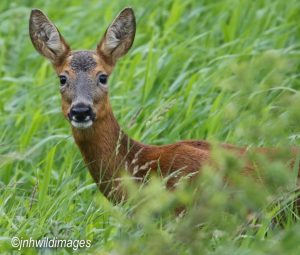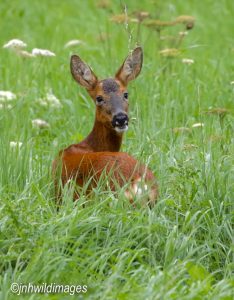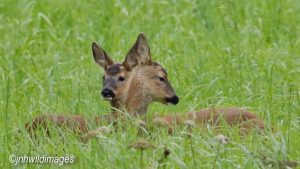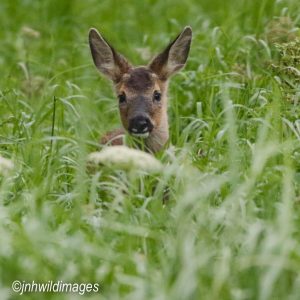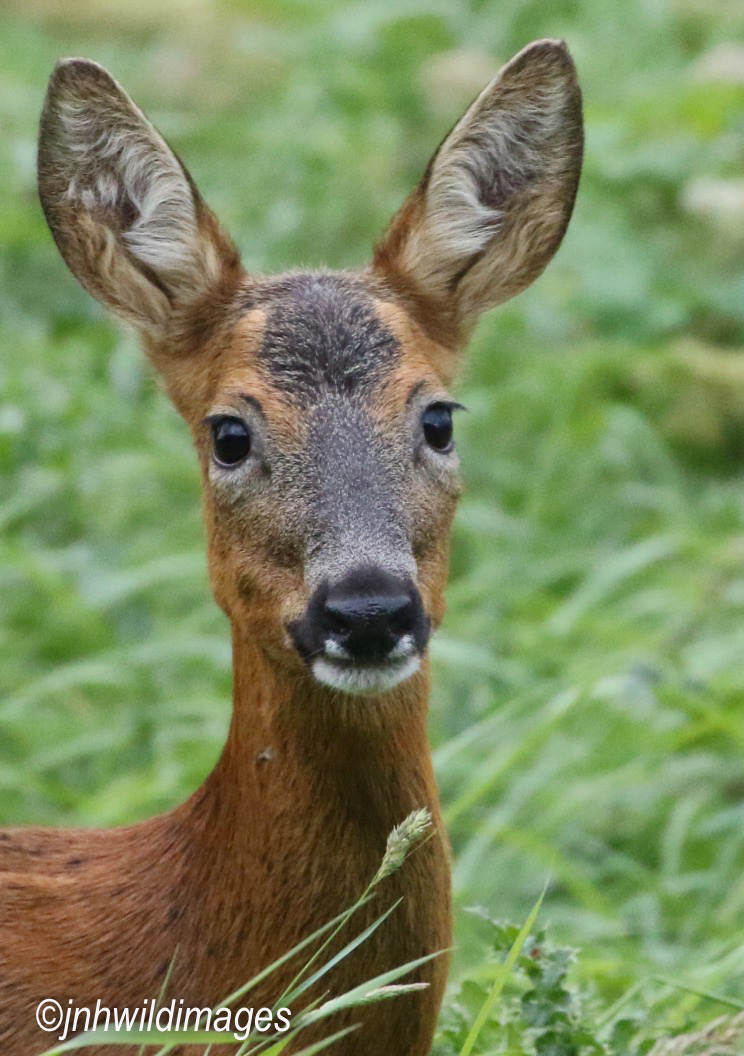On one of our recent evening walks my wife and I were lucky to spot a female Roe Deer. Roe Deer along with Red Deer are the only two species of deer that are native to the UK. The biology of Roe Deer is very interesting as the rut takes place in August and any female deer that are impregnated the foetal development is delayed for 4 months until January; then the embryo will start to develop; this is is to prevent any young been born in the cold winter months. Pregnancy lasts for 5 months and the fawns are born in May/June and 75% of all births are twins! The young fawns are weaned in 3/4 months and they will stay with the female until the following Spring.Roe deer are mainly solitary, but they will form small herds in the winter months. A Roe deer will ‘bark’ when it is alarmed and young deer have a ‘whistle’ to communicate with the female. Roe deer have no natural predators in the UK; however newly born fawns can be taken by foxes. The biggest casualty rate is caused by car collision and yearlings are especially vulnerable. In some areas Roe Deer numbers can get quite high and they can cause damage to farm crops and new forestry plantations. Where this problem arises, trained marksmen are employed to cull herds – to protect crops and to sustain a healthy population. Roe deer are very common in the nearby forests of Dalby and Cropton but to get one so close to home is a little bit special; especially as this female has two fawns. On several evenings now I have watched her as she feeds in the knee high grass. Only when she knows its safe will the fawns come and join her from a nearby copse. Often, all you see are a pair of little brown ears as the fawns negotiate their way through the thick vegetation. At the moment she is still weaning them, however it won’t be long before they gain more independence. But for now they don’t wander far from their mother’s side. As the female moves around the field , finding the most succulent grasses the fawns follow and it has been great to watch them bound clear above the thick vegetation so they don’t lose track of the female.
